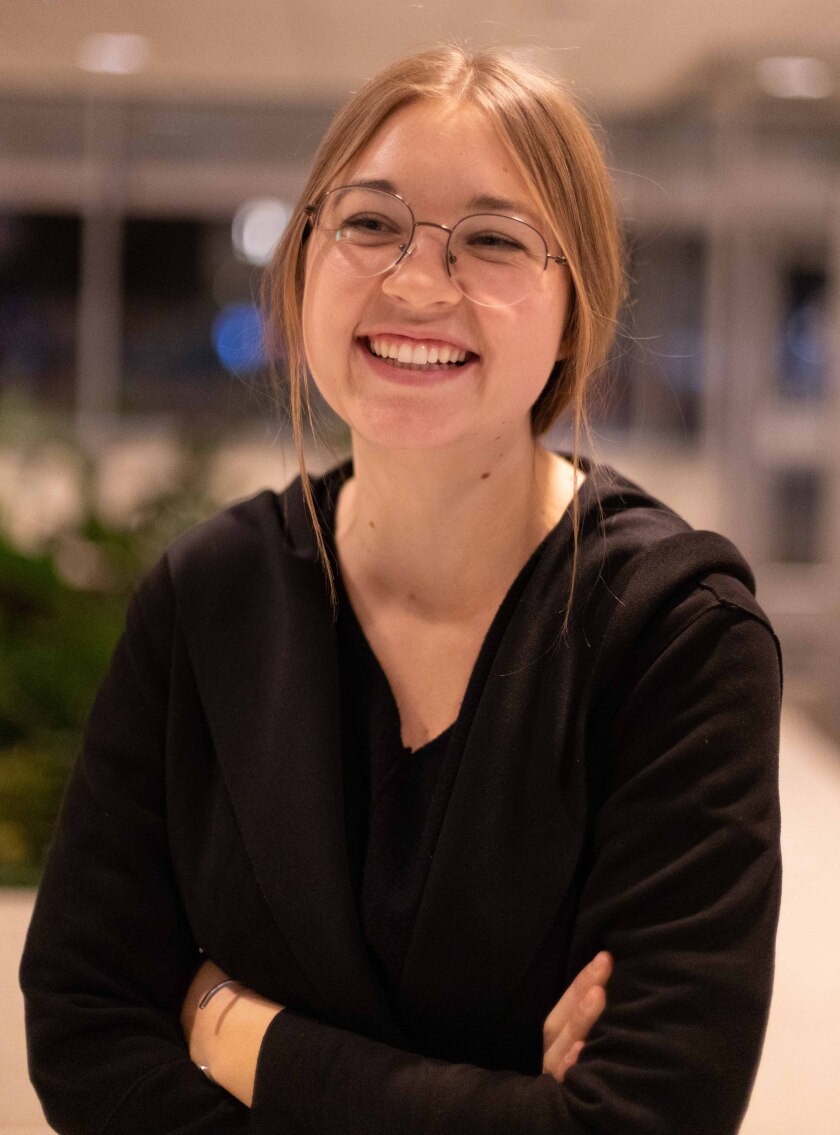Gabriella Warnick, Art Major at BYU, Presented Audio From the de Jong’s Past and Present as an Immersive Art Installation on Nov 11.

As visitors walked through Gabriella Warnick’s “Requiem for a Stage” in the Harris Fine Arts Center’s de Jong Concert Hall, they stepped back into archival recordings of events, including historical and recent performances and rehearsals, and the sounds of the inaugural hymn sung at the building's 1965 dedication.
Warnick set up speakers around the concert hall so that as visitors walked to various parts of the stage, they heard different segments of audio. As the audio played, the installation itself was being recorded on a reel-to-reel tape recorder capturing every live sound. Warnick created an immersive auditorial experience for visitors to the de Jong.
“My installation was about layering sounds past and present that were once at home in the de Jong,” said Warnick when asked to describe her installation.

Warnick said most of her college career was spent in the de Jong and other stages around campus. When she first heard about the demolition of the Harris Fine Arts Center, Warnick felt overwhelmingly sad. Yet, that sadness became a catalyst for her artistic endeavors to honor and remember the sounds of the de Jong.
Warnick described her exhibition, saying, “it was a way to hold all the memories together ranging from working backstage to attending performances.”
Warnick listened to hours of audio recordings to sort through those she felt really embodied the history of the de Jong. She spoke with professors and peers, and searched archives to locate and gather audio.
As an artist, Warnick’s main medium is audio which pairs well with her minor in theatre. “I love how audio works to invoke certain ideas, memories and feelings,” she said.
Warnick didn’t want to only include polished performances in her installation. She looked for recordings that also captured her everyday experiences in the de Jong. Warnick described that as she listened to the audio, she realized there were certain things she wanted to capture and record herself.
“I recorded sounds that people don’t normally record for a show or an album, like walking up stairs. All of us can identify those sounds who have worked in this space,” said Warnick. “To invoke the past, I didn’t want to only reference it with sounds that are whole and complete, but I wanted to capture sounds that were mid-process or unfinished.
Some of Warnick’s favorite moments of audio include those sounds of people walking up and down stairs, conversations held backstage and orchestra warmups.
BYU alumni Tip and Paul Boxwell walked through Warnick’s exhibit. As father and son, they described that it was a special experience to remember the HFAC together.
Paul Boxwell sang in the Men’s Chorus from 1994 to 1996 during his time at BYU; he said that the experience brought back memories of many successful concerts. “It’s been a long time but it’s nice to come back, see and remember the way things were back then.”
“This has certainly made me feel nostalgic being here with my son,” said Tip Boxwell about his experience in the installation. “I think both of us are thinking about people and specific moments.”
Many visitors felt that the installation evoked meditative or cathartic experiences. Some visitors sat or laid on the stage to let the sound wash over them.
For Warnick, creating the exhibit provoked self-reflection. "This project felt like a perfect blend between my art practice and the work I do in theatre and music,” said Warnick. “Although my art practice isn’t picking up a violin or playing at a piano, the way I could remember moments at the HFAC and pay homage to the de Jong was through an artistic practice.”
Demolition of the HFAC will begin in 2023 and the new Arts building is set to open in 2025. Warnick hopes to come back someday to experience the building replacing the HFAC.
“I am excited to see what students do in a few years coming back,” Warnick said. “I’ll have no memories at the new building, but students will be making their own.”






